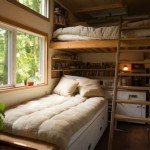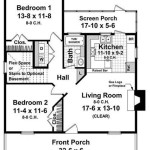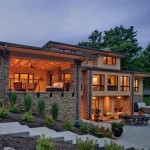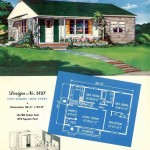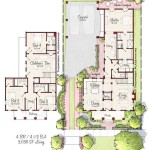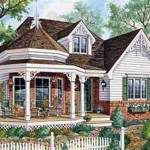4 Bedroom House Plan Designs: A Comprehensive Guide
Designing a 4-bedroom house involves a careful consideration of space, functionality, lifestyle, and budget. The floor plan serves as the blueprint for creating a comfortable and practical living environment for families of various sizes. This article provides a comprehensive overview of various 4-bedroom house plan designs, exploring key considerations, common layouts, and design elements that contribute to a successful and livable home.
Understanding the Needs of a 4-Bedroom Household
Before delving into specific design options, it is crucial to understand the needs and lifestyle of the occupants. A 4-bedroom house often caters to families with children, multi-generational living arrangements, or individuals who require dedicated workspaces or guest rooms. Therefore, the design should prioritize flexibility, privacy, and communal spaces to accommodate diverse activities and preferences.
Considerations include the number of residents, their ages, and their individual needs. For instance, families with young children might prioritize a large play area and easy access to parental bedrooms. Multi-generational households may require private suites with independent living spaces. Individuals working from home might need a dedicated office space with minimal distractions. Understanding these specific requirements is fundamental to choosing the appropriate 4-bedroom house plan.
Exploring Common 4-Bedroom House Plan Layouts
Several common layouts are employed in 4-bedroom house plans, each offering distinct advantages and disadvantages. These layouts are often categorized based on the arrangement of the bedrooms, living areas, and service areas (kitchen, bathrooms, laundry). Understanding the different approaches allows for informed decision-making when selecting the most suitable design.
Ranch-Style Layout: This single-story layout is characterized by its horizontal design. Bedrooms are typically located on one side of the house, separate from the living and dining areas. This layout is ideal for individuals with mobility limitations due to the absence of stairs. However, the expansive footprint can increase construction costs and require a larger lot size.
Two-Story Layout: This layout vertically separates the living areas from the sleeping areas, usually placing the bedrooms on the upper floor. This configuration minimizes noise transfer between different activities and allows for a smaller footprint compared to the ranch-style layout. Staircases are a necessary component, which may pose challenges for individuals with mobility issues. Two-story houses can often maximize living space within a smaller lot size.
Split-Level Layout: This layout features multiple levels connected by short flights of stairs. This design can be advantageous for separating different zones of the house and providing a sense of privacy. However, the fragmented layout may not appeal to everyone, and navigating the different levels can be challenging for some. Split-level designs often offer interesting architectural features.
Cape Cod Layout: Similar to a two-story layout, the Cape Cod style often features bedrooms on the second floor tucked under the eaves. This design is characterized by its symmetrical façade, steep rooflines, and dormer windows. This style provides a cozy and traditional aesthetic. Reduced headroom on the second floor due to the roofline can be a consideration.
Key Design Elements in 4-Bedroom House Plans
Beyond the overall layout, specific design elements contribute to the functionality, comfort, and aesthetic appeal of a 4-bedroom house. These elements include the size and location of bedrooms, bathrooms, living areas, and service areas, as well as the incorporation of features such as walk-in closets, en-suite bathrooms, and outdoor living spaces.
Bedroom Size and Configuration: The size and configuration of the bedrooms should reflect the intended occupants. The master bedroom typically comprises a larger space with a walk-in closet and an en-suite bathroom. Secondary bedrooms can be smaller but should still provide adequate space for sleeping, studying, and storage. Consider the placement of windows for natural light and ventilation, and ensure sufficient privacy between bedrooms.
Bathroom Design: The number and configuration of bathrooms are crucial for household convenience. A master bathroom is almost essential, and a shared bathroom for the secondary bedrooms is common. Additionally, a powder room (half-bathroom) near the living areas can be beneficial for guests. The design of the bathrooms should prioritize functionality, water efficiency, and aesthetics. Consider features such as double vanities, separate shower and tub areas, and ample storage.
Living and Dining Areas: The living and dining areas serve as communal spaces for family gatherings and entertaining guests. The size and layout of these areas should be proportionate to the overall size of the house and the lifestyle of the occupants. Open-concept designs that combine the living, dining, and kitchen areas are popular for their spaciousness and social connectivity. However, defined living and dining rooms can provide more formality and separation of space. Consider the placement of windows and doors to maximize natural light and access to outdoor living spaces.
Kitchen Design: The kitchen is the heart of the home and should be designed for efficiency and functionality. Consider the placement of appliances, such as the refrigerator, stove, and dishwasher, to create a logical workflow. Ample counter space is essential for food preparation. Storage solutions, such as cabinets, drawers, and pantries, should be readily accessible. Consider the inclusion of an island or peninsula for additional workspace and seating. The kitchen should be well-ventilated to remove cooking odors and moisture.
Service Areas: Service areas, such as the laundry room, mudroom, and garage, play an important role in the overall functionality of the house. The laundry room should be conveniently located near the bedrooms or kitchen. A mudroom provides a transition space between the outdoors and the indoors, helping to keep the house clean. The garage provides parking and storage space. The design of these areas should prioritize practicality and efficiency. Consider the placement of utilities, such as the water heater and HVAC system, to minimize noise and maximize space utilization.
Outdoor Living Spaces: Outdoor living spaces, such as patios, decks, and porches, extend the living area of the house and provide opportunities for relaxation and recreation. Consider the orientation of the house to maximize sunlight and provide shade. The design of outdoor living spaces should complement the overall architecture of the house. Consider the use of durable and weather-resistant materials. Include features such as outdoor kitchens, fireplaces, and seating areas to create a comfortable and inviting outdoor environment.
Storage Solutions: Adequate storage is essential for maintaining a clutter-free and organized home. Consider incorporating storage solutions throughout the house, such as closets, shelves, drawers, and cabinets. Walk-in closets provide ample storage space for clothing and accessories. Built-in shelves can be used to display books and decorative items. Drawers and cabinets provide storage for cookware, utensils, and other household items. Consider the placement of storage areas to maximize accessibility and convenience.
Accessibility Considerations: When designing a 4-bedroom house, it is important to consider accessibility for individuals with mobility limitations. This may involve incorporating features such as ramps, wider doorways, grab bars in bathrooms, and lever-handled door hardware. Universal design principles can be applied to create a home that is accessible to people of all ages and abilities. Consider the placement of electrical outlets and light switches to ensure they are easily accessible.
Energy Efficiency: Energy efficiency is an important consideration for any house design. Incorporating energy-efficient features can reduce energy consumption and lower utility bills. This may involve using energy-efficient windows and doors, insulation, and appliances. Consider the orientation of the house to maximize sunlight in the winter and minimize sunlight in the summer. The use of renewable energy sources, such as solar panels, can further reduce energy consumption. Energy-efficient homes are more comfortable and sustainable.
Natural Light and Ventilation: Natural light and ventilation are essential for creating a healthy and comfortable living environment. Consider the placement of windows and doors to maximize natural light and ventilation. Skylights can be used to bring natural light into interior spaces. Operable windows allow for natural ventilation. The use of light-colored paint and reflective surfaces can enhance natural light. Proper ventilation helps to remove stale air and moisture, improving indoor air quality.
Aesthetic Considerations: The aesthetic appeal of a 4-bedroom house is subjective and depends on the personal preferences of the occupants. However, certain design principles can be applied to create a visually appealing home. These include proportions, balance, symmetry, and rhythm. The use of colors, textures, and materials can enhance the aesthetic appeal of the house. Consider the architectural style of the house and choose design elements that complement the style. The exterior of the house should be visually appealing and inviting. The interior of the house should be comfortable and reflect the personality of the occupants.
The selection of a 4-bedroom house plan is a significant decision that requires careful planning and consideration. By understanding the needs of the occupants, exploring different layout options, and incorporating key design elements, it is possible to create a comfortable, functional, and aesthetically pleasing home that meets the evolving needs of a family.

4 Bedroom House Plan Examples

4 Bedroom House Plans Home Designs Celebration Homes 5
4 Bedroom House Plans Top 8 Floor Design Ideas For Four Bed Homes Architecture

Cool Four Bedroom House Plans New Home Design D7e One Story

4 Bedroom House Autocad Ground Floor Plan Design Cadbull

4 Bedroom House Plans Real Estate Taania Be Forward

Four Bedroom House Plans 4 Designs Floor The Designers

4 Bedroom Modern House Plans Designs Nethouseplansnethouseplans

304sqm Tuscan Residence House Plan Home Designs Plandeluxe

4 Bedroom Bungalow Rf 4015 Floor Plans Design Building House

